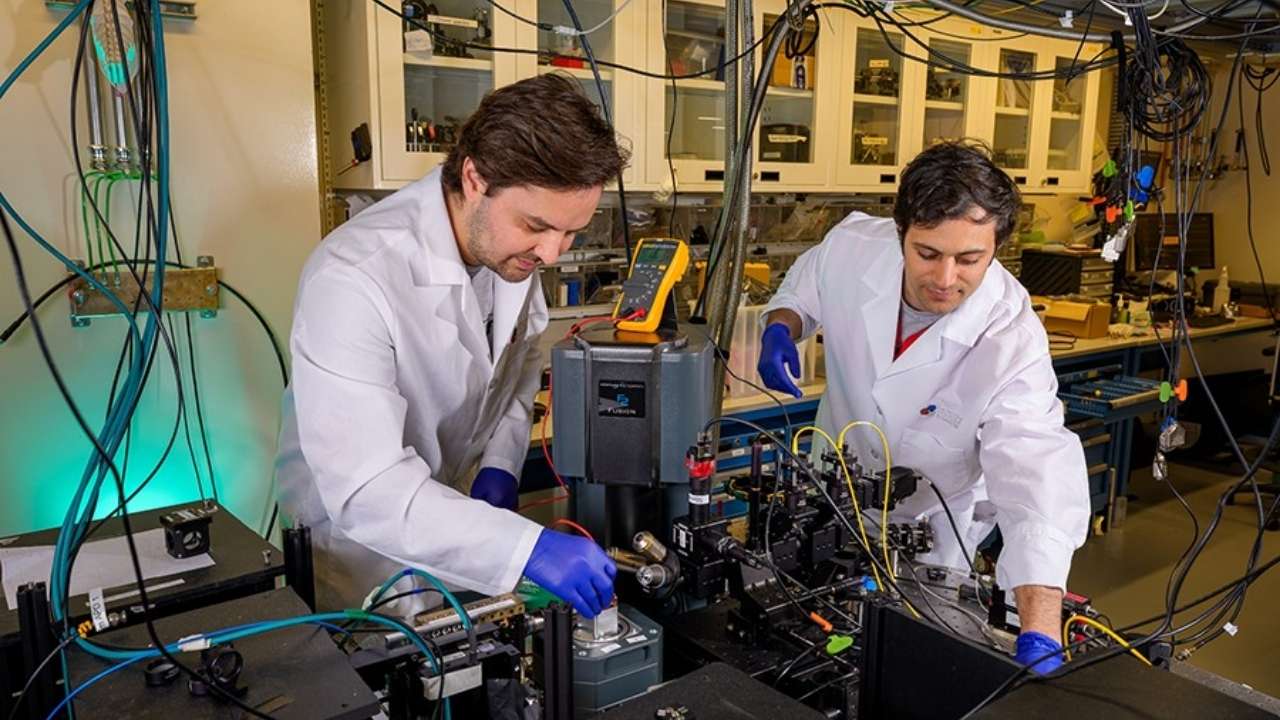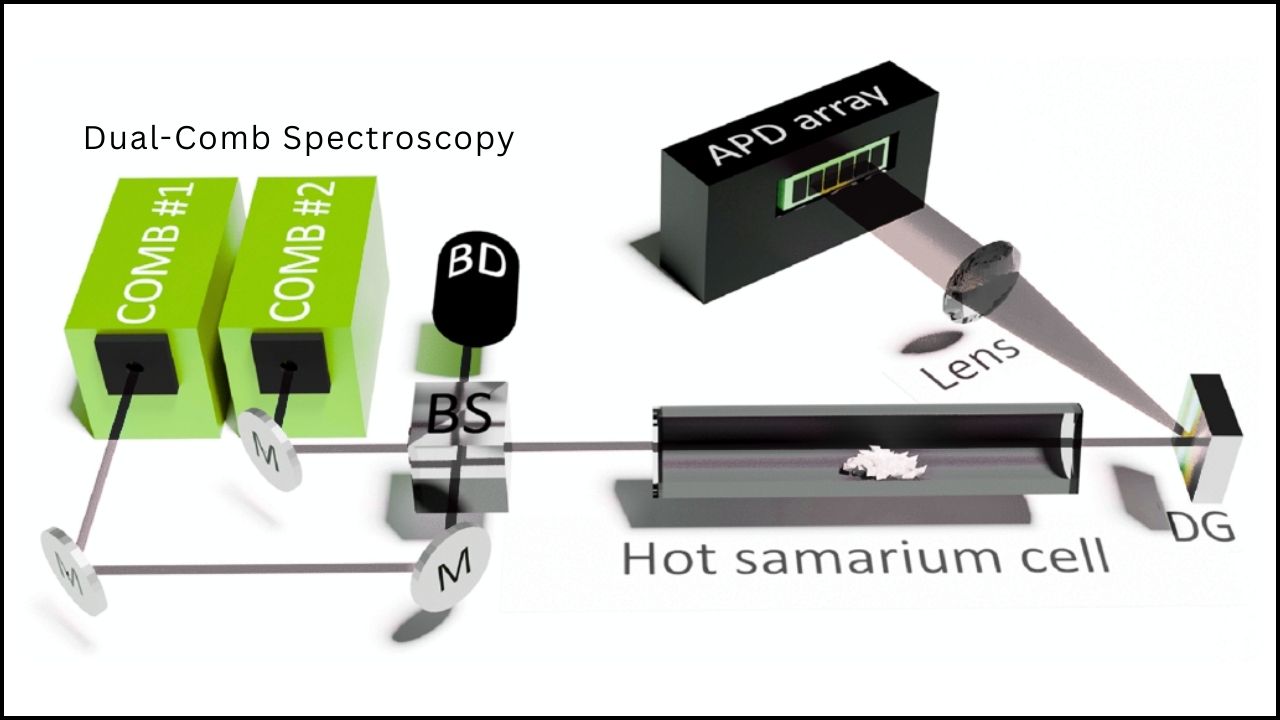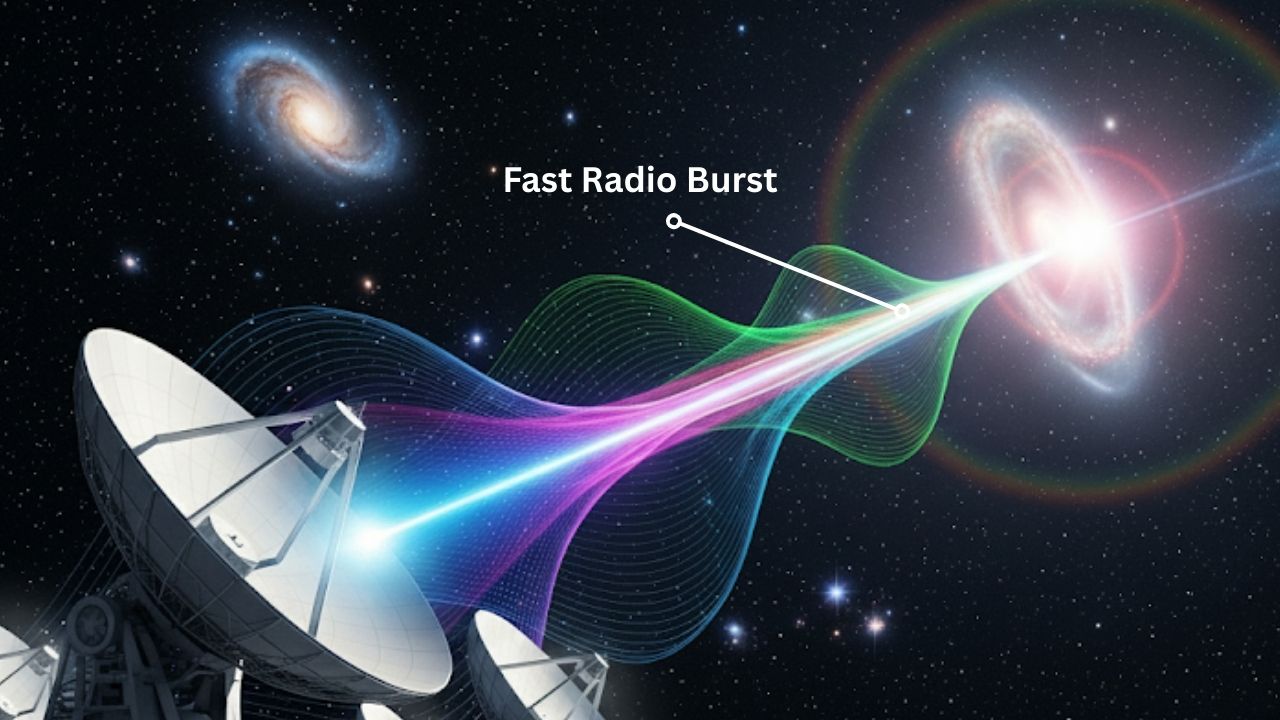New Horizons Successfully Detects Distant Starlight in Deep Space Experiment: NASA’s New Horizons spacecraft has once again pushed the boundaries of human knowledge, this time by successfully detecting and measuring distant starlight in deep space. This achievement marks a major milestone for both space navigation and astronomy, demonstrating a new way of measuring distances in the cosmos and deepening our understanding of the universe’s structure. Whether you’re a student, educator, or space professional, this story offers fascinating insights and practical lessons from the edge of our solar system.
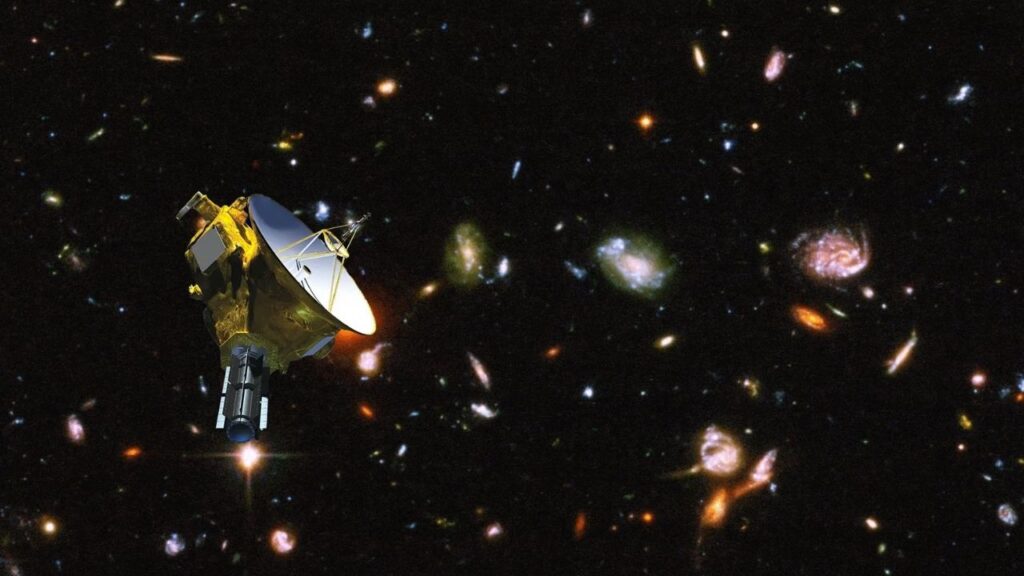
New Horizons Successfully Detects Distant Starlight in Deep Space Experiment
| Feature/Result | Details & Stats |
|---|---|
| Mission Name | New Horizons |
| Experiment | First successful deep space stellar navigation using parallax |
| Distance from Earth | Over 438 million miles (700 million kilometers) |
| Stars Observed | Proxima Centauri (4.2 light-years), Wolf 359 (7.86 light-years) |
| Parallax Baseline | Over 4 billion miles (largest ever used for this type of experiment) |
| Navigation Accuracy | 4.1 million miles (6.6 million km), equivalent to 26 inches from NY to LA |
| Mission Status | Ongoing, now focused on heliophysics and searching for new Kuiper Belt Objects (KBOs) |
| Official Website | NASA New Horizons Mission |
The New Horizons deep space starlight experiment is a landmark achievement in both navigation and astronomy. By capturing the first-ever large-scale parallax images from deep space, the mission has advanced our ability to navigate the cosmos and deepened our understanding of the universe’s structure. As New Horizons continues its journey, it promises to deliver even more discoveries from the final frontier, inspiring future generations to reach for the stars.
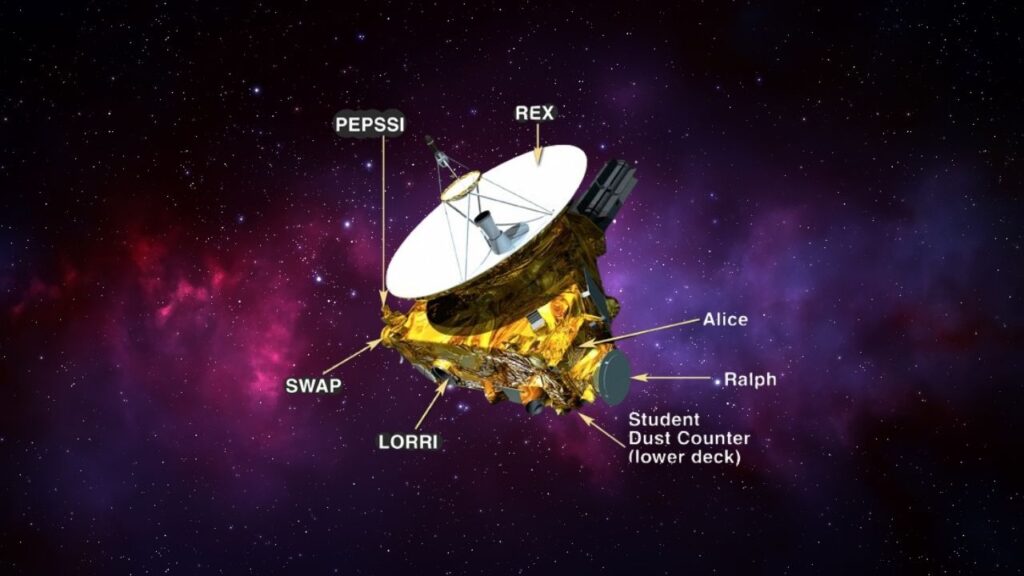
What is the New Horizons Deep Space Starlight Experiment?
Launched in 2006, New Horizons was designed to explore Pluto and the Kuiper Belt, a region beyond Neptune filled with icy objects and cosmic mysteries. After its historic Pluto flyby in 2015, New Horizons continued its journey deeper into the solar system, becoming one of the most distant active spacecraft ever.
In 2025, New Horizons accomplished something never done before: it captured images of two nearby stars—Proxima Centauri and Wolf 359—from a vantage point more than 438 million miles from Earth. At the same time, astronomers on Earth took matching images of the same stars. By comparing these images, scientists could observe the stars appearing to shift positions—a phenomenon known as stellar parallax.
Why Is This Important?
- Stellar parallax is the most direct and reliable method astronomers use to measure the distance to nearby stars. Traditionally, this is done from Earth using the diameter of our planet’s orbit as a baseline. With New Horizons, the baseline was more than 20 times larger, making the effect much more pronounced and measurable.
- This is the first time such a large-scale, deep space parallax experiment has been performed, offering a real three-dimensional view of our stellar neighborhood.
The Science Behind the Experiment
Understanding Stellar Parallax
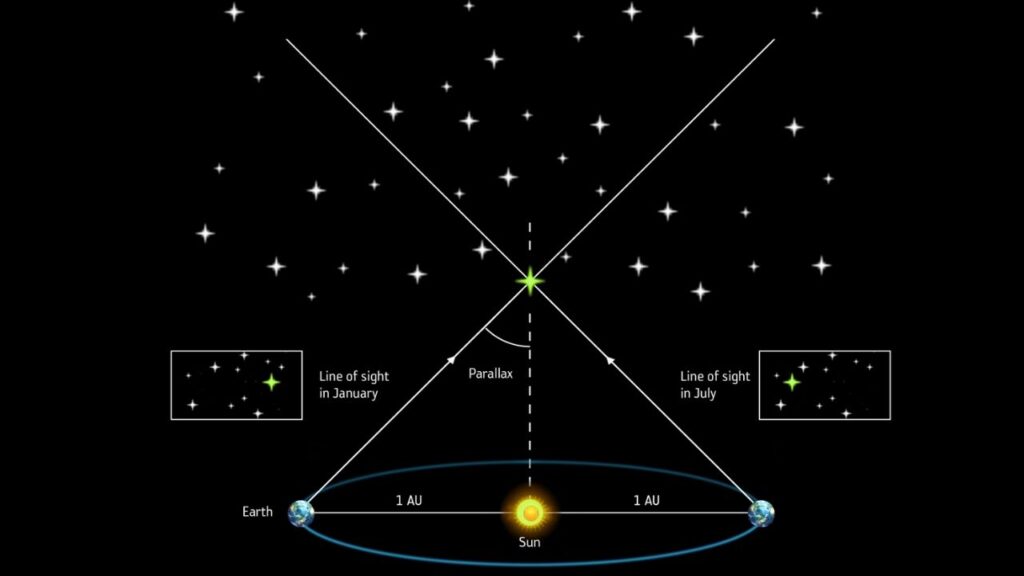
Stellar parallax is a simple yet powerful concept. Imagine holding your finger in front of your face and looking at it first with your left eye, then with your right. Your finger seems to move against the background. The same effect happens when we look at stars from two widely separated points in space.
On Earth, astronomers use the planet’s orbit around the Sun to create a baseline for measuring parallax. The larger the baseline, the easier it is to detect the tiny shifts in a star’s position. New Horizons, being billions of miles from Earth, provided a baseline longer than anything previously possible.
Step-by-Step: How the Experiment Worked
- Selecting the Target Stars:
Scientists chose Proxima Centauri and Wolf 359 because they are among the closest stars to the Sun, making their apparent shift more detectable. - Coordinated Imaging:
New Horizons used its onboard cameras to photograph the target stars from its distant location in the Kuiper Belt. Simultaneously, astronomers on Earth captured images of the same stars using ground-based telescopes. - Data Comparison:
By overlaying the images from New Horizons and Earth, scientists could see the stars in slightly different positions against the background of more distant stars. This measurable shift is the parallax effect. - Calculating Distances:
Using the known distance between Earth and New Horizons, and the measured shift, astronomers calculated the spacecraft’s position relative to the stars with an accuracy of about 4.1 million miles (6.6 million km).
Why This Experiment Matters
1. A New Era in Deep Space Navigation
Navigating spacecraft in deep space is a complex challenge. Traditional navigation relies heavily on radio signals sent from Earth, which become less precise the farther a spacecraft travels. The New Horizons experiment proves that stellar navigation—using the positions of stars—can work even at the edge of our solar system. This method could be crucial for future missions to the outer planets, the Kuiper Belt, or even interstellar space.
Practical Example:
Imagine you’re a sailor crossing a vast ocean with no landmarks. Ancient navigators used the stars to find their way. Now, thanks to New Horizons, we know it’s possible to do the same across the vastness of the solar system.
2. Improving Our Measurement of the Universe
Directly measuring stellar parallax over a 4-billion-mile baseline allows astronomers to refine the distances to nearby stars with unprecedented accuracy. This, in turn, helps calibrate other methods used to measure even greater cosmic distances, forming the foundation of our understanding of the universe’s scale.
3. Educational and Public Engagement Value
The clear, visual demonstration of parallax provided by New Horizons is a powerful educational tool. It makes an abstract concept tangible, helping students and the public grasp how astronomers measure the universe. The images create a true 3D effect, bringing the stars to life in a way never before seen.
4. Cosmic Optical Background: Shedding Light on the Universe’s Darkness
New Horizons’ unique position also allowed it to measure the faint background light in the universe, known as the Cosmic Optical Background (COB). The mission confirmed that this faint glow is entirely due to known galaxies, with no significant unknown sources. This finding helps resolve longstanding questions about the origin of cosmic background light and supports current models of the universe’s structure.
The Journey of New Horizons: From Pluto to the Kuiper Belt
Mission Timeline
- Launch: January 19, 2006
- Jupiter Flyby: February 2007 (used for a gravity assist to speed up the journey)
- Pluto Flyby: July 14, 2015 (first close-up images of Pluto and its moons)
- Kuiper Belt Object Flyby (Arrokoth): January 1, 2019 (most distant object ever explored)
- Current Status: Over 438 million miles from Earth, exploring the Kuiper Belt and beyond
What’s Next for New Horizons?
- Heliophysics Research:
New Horizons is now focusing on studying the heliosphere—the bubble of space influenced by our Sun—and the environment at the edge of the solar system. - Searching for New Kuiper Belt Objects:
Scientists are using powerful telescopes to find new targets for New Horizons to visit. A successful rendezvous would provide more data about the early solar system. - Toward Interstellar Space:
By the late 2020s or 2030s, New Horizons is expected to cross the boundary into interstellar space, following the path of the Voyager probes but equipped with more advanced instruments.
Practical Advice: How This Impacts Future Missions
For Space Agencies and Engineers
- Navigation:
The success of stellar navigation means future spacecraft can rely less on Earth-based tracking, increasing autonomy and reducing mission costs. - Mission Planning:
Missions to the outer solar system or beyond can now plan for more accurate positioning and course corrections.
For Educators and Students
- Teaching Tools:
Use the New Horizons parallax experiment as a real-world example to teach geometry, astronomy, and the scientific method. - Hands-On Activities:
Try simple parallax experiments in the classroom using two cameras or even your own eyes to mimic the spacecraft’s achievement.
For Astronomy Enthusiasts
- Understanding the Cosmos:
This experiment reinforces the importance of direct measurement in astronomy and highlights the interconnectedness of observation and theory.
SpaceX Launches UK Satellite to Manufacture Semiconductors in Space for Quantum Tech
Time Is the Real Fabric of the Universe, Not Space, Says Groundbreaking Study
Quantum Sensors Now Deliver Unmatched Precision For Medical And Aerospace Breakthroughs
FAQs About New Horizons Successfully Detects Distant Starlight in Deep Space Experiment
What is stellar parallax?
Stellar parallax is the apparent shift in a star’s position when viewed from two different locations. It’s the fundamental method astronomers use to measure the distances to nearby stars.
Why is the New Horizons experiment unique?
It’s the first time stellar parallax has been measured over a baseline of more than 4 billion miles, making the effect much more visible and accurate than ever before.
How does this help future space missions?
It proves that deep space navigation using stars is possible, which will be crucial for missions venturing far from Earth, such as journeys to the outer planets or interstellar space.
What else is New Horizons doing?
Besides this experiment, New Horizons continues to study the Kuiper Belt, the heliosphere, and is searching for new objects to visit. It’s expected to operate into the 2040s, sending back valuable data from the edge of our solar system.
